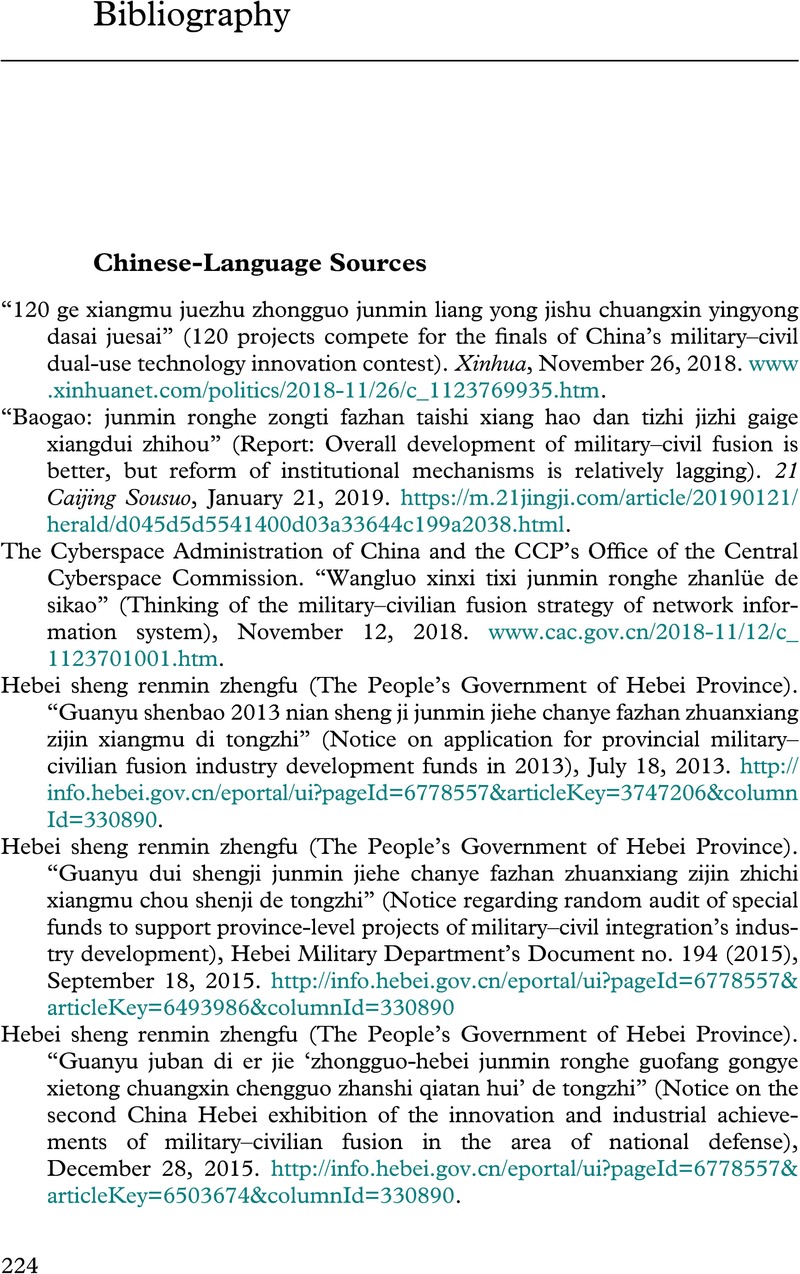Book contents
- The Fourth Industrial Revolution and Military–Civil Fusion
- The Fourth Industrial Revolution and Military–Civil Fusion
- Copyright page
- Dedication
- Contents
- Figures
- Tables
- Acknowledgments
- Abbreviations
- 1 Introduction
- 2 Military–Civil Fusion
- 3 MCF in the United States of America
- 4 MCF in China
- 5 MCF in India
- 6 MCF in Israel
- 7 Conclusions
- Bibliography
- Index
- References
Bibliography
Published online by Cambridge University Press: 01 June 2023
- The Fourth Industrial Revolution and Military–Civil Fusion
- The Fourth Industrial Revolution and Military–Civil Fusion
- Copyright page
- Dedication
- Contents
- Figures
- Tables
- Acknowledgments
- Abbreviations
- 1 Introduction
- 2 Military–Civil Fusion
- 3 MCF in the United States of America
- 4 MCF in China
- 5 MCF in India
- 6 MCF in Israel
- 7 Conclusions
- Bibliography
- Index
- References
Summary

- Type
- Chapter
- Information
- The Fourth Industrial Revolution and Military-Civil FusionA New Paradigm for Military Innovation?, pp. 224 - 249Publisher: Cambridge University PressPrint publication year: 2023



